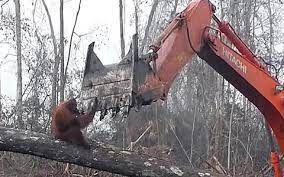Dominic Harris: Polar Bear from the series Arctic Souls (2023)
Code, electronics, LCD screen, sensors, aluminium
65 (W) x 106 (H) x 12 (D) cm
Heide Hatry photographed by J. C. Rice on the Great Lawn in
Central Park (NYC) making Snow Bears in the winter of 2020-21
I.
Take two polar bears created by two very different artists: the first constructed in code by the London based British artist Dominic Harris; and the second made with snow by the New York based German artist Heide Hatry ...
II.
In a tryptich entitled Arctic Souls (2023), Harris seeks to remind viewers of the beauty (and vulnerability) of three of the Arctic's most iconic inhabitants; the polar bear, the Arctic fox, and the Arctic hare. Whether the portraits also capture each creature's essence is debatable (I would obviously say not).
As Harris reveals on his website, despite looking strangely real and lifelike thanks to the level of intricate detail - not to mention the fact the animals respond to the movements of an approaching viewer - they are in fact high-fidelity digital constructions presented on an interactive screen.
In other words, his work is the manifestation of the purest techno-idealism and ultimately tells us more about him than it does about the fascinating animal species he has chosen to depict, including the iconic carnivore shown here.
III.
Harris is an artist who uses the very latest technology to share with us his vision of the natural world, transforming the latter (and the creatures that inhabit it) into an imagined reality that the viewer can not only observe, but interact with and immerse themselves within.
The effect is magical. But as much as there is beauty and playfulness in the computer-generated, artificially intelligent world Harris creates, there is also something disturbing; something a bit uncanny valley-ish.
Harris is undoubtedly aware of this and maybe he wishes to exploit our unease in order to challenge perceptions of what constitutes reality and make us question what we want our relationship with the world to be. To what extent, for example, do we wish our daily experience to be mediated via technology? Do we want to see butterflies in the back garden, or on a giant screen?
Maybe the answer is we want both: but what if we can't have both?
What if in so seamlessly encoding the natural world and transforming everything into digital information we exterminate reality? This is what Baudrillard refers to as the perfect crime; i.e., the unconditional realisation of the world via the actualisation of all data [1].
IV.
Consider in contrast the Snow Bears made by Heide Hatry ... [2]
Whilst Harris and his team are operating in the warmth of his Notting Hill studio - designing, engineering, coding, and fabricating his diabolicaly clever artworks and installations - Ms Hatry has been scrambling around on hands and knees and freezing her tits off for the last couple of winters in snowy Central Park, making snow sculptures of polar bears.
Despite both Harris and Hatry issuing a similar call to preserve the natural environment that polar bears live
in, I find her work more poignant and many native New Yorkers were also touched and grateful for her heroic efforts.
I remember once Malcolm McLaren telling me that a man on a mountain top tapping two sticks together makes a much bigger sound that all the electronic music in the world. Similarly, we might say that someone daubing paint by hand on a cave wall produces a much truer representation of the world than all the digital photographs shared on Instagram; or a woman making Schneebären that will quickly melt to nothing (just like the Arctic sea ice) moves us more than someone using code and colours to create a virtual reality.
Notes
[1] See Jean Baudrillard, The Perfect Crime, trans. Chris Turner (Verso Books, 1996).
In brief, Baudrillard argues that reality has been made to disappear and singular being exterminated via technological and social processes bent on replacing real things and real lives with a series of images and empty signs. For Baudrillard, this consitutes the most important event of modern history; one carried out before our very eyes and in which we have all - including artists - have been complicit, although, ironically, it is artists who also leave clues or traces of criminal imperfection behind them.
[2] Some readers might recall that I have written previously about Heide Hatry and her snow bears; see the post dated 16 February, 2021: click here.
For more information on Dominic Harris and his work visit: dominicharris.com - or click here if you wish to go straight to the page on Arctic Souls (2023). Harris is represented by the Halcyon Gallery (London): click here.
For more information on Heide Hatry and her work visit: heidehatry.com



